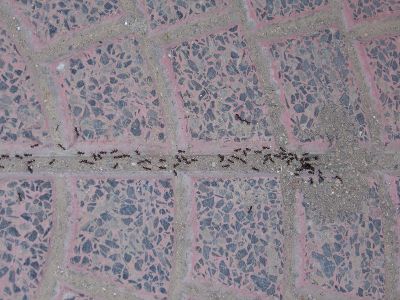The evolution of teaching in animals

Ants, fot. By Taken by Fanghong (Own work) [GFDL (httpwww.gnu.orgcopyleftfdl.html), CC-BY-SA-3.0
An EU study addressed the evolution of teaching in animals by examining the behaviour in ants. Considering mainly hunger state, the work illustrates how teaching benefits ants, especially regarding exploration and nest-site decision making.
Teaching has been observed among various animal species, yet incurs a cost, which raises questions about how the behaviour evolves. Comparing instances of teaching in nature helps to answer the question, and establishes the minimum criteria for more sophisticated behaviours.
The EU-funded 'Efficiency and regulation of teaching under environmental constaints' (TEACHING IN ANTS) project examined teaching behaviour in the tandem running ant, Temnothorax albipennis. The study questioned whether a colony's internal and external environments affect the degree and success of teaching. Another question was whether teaching evolved according to simple rules. The project ran between January 2012 and January 2014.
Teaching in ants consists of tandem running, whereby two T. albipennis individuals forage side by side and exchange considerable quantities of information. The study quantified the time allocated to tandem running, depending on several environmental and internal variables. The method can be applied to other animal groups, and yields an understanding of teaching efficiency.
Project members found that teaching strongly depends on the individuals' and group's internal hunger state. Increase in hunger rates affects the rates of information being sought and given. The level of starvation, rather than a period of food deprivation, resolves inconsistencies in previous studies regarding the costs/benefits of teaching.
Individual starvation level was also a key factor affecting the frequency of teaching the location of a new nest site. Starvation can affect the quality of teaching, which affects the selection of quality nest sites. Hence, the study concluded that teaching plays a vital role in group decision making.
The research documented several other nuances of teaching behaviour and its relation to information accuracy as well as the adaptive importance of exploration. The team constructed a mathematical model to account for the evolution of teaching from incidental predation behaviour.
TEACHING IN ANTS made a major contribution to debates about whether human-style teaching is demonstrated in other animals. The work provided new insights into the evolution of teaching and its implications for the evolution of adaptive decision making.
published: 2015-05-13